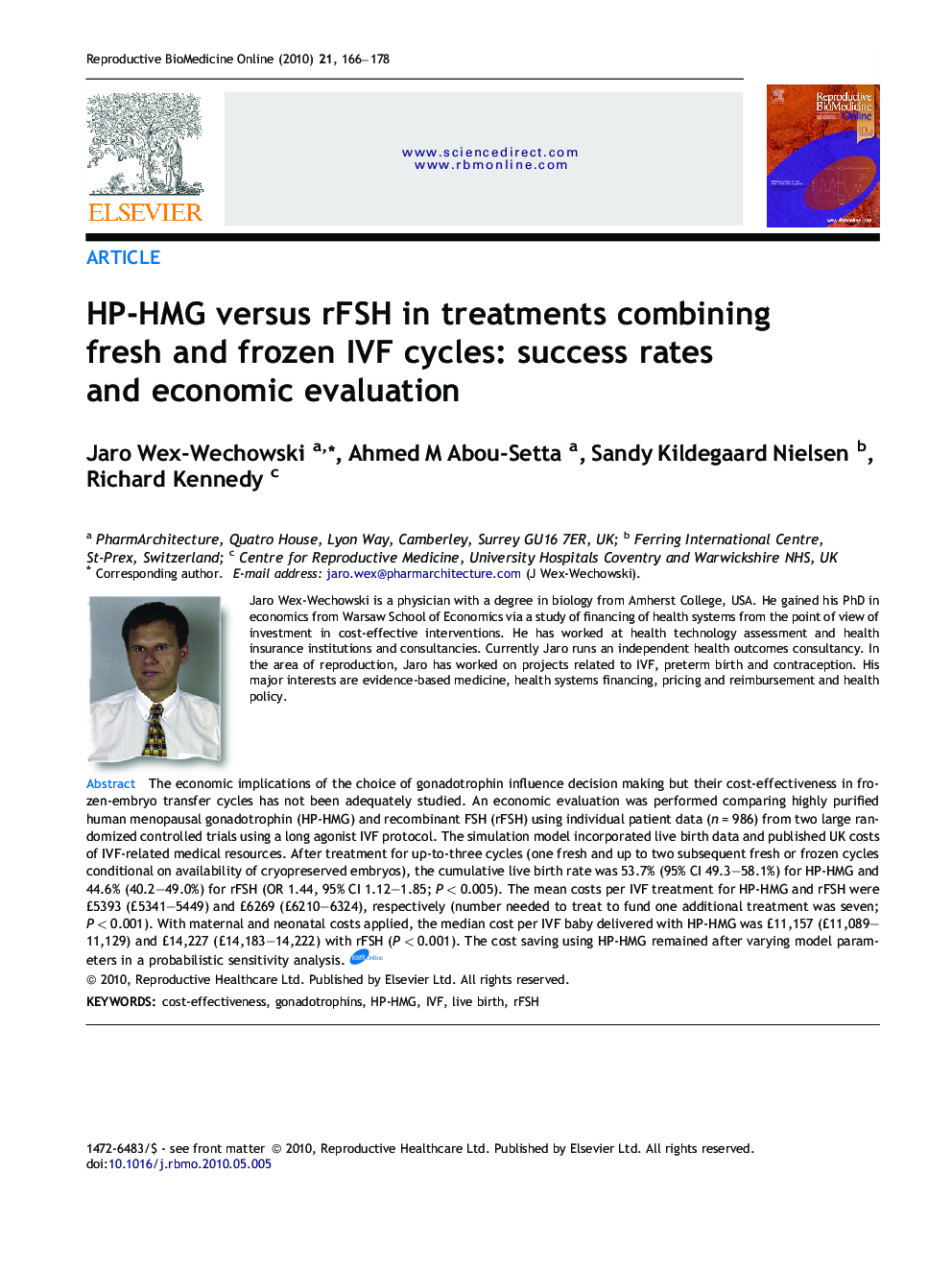| Article ID | Journal | Published Year | Pages | File Type |
|---|---|---|---|---|
| 3971747 | Reproductive BioMedicine Online | 2010 | 13 Pages |
The economic implications of the choice of gonadotrophin influence decision making but their cost-effectiveness in frozen-embryo transfer cycles has not been adequately studied. An economic evaluation was performed comparing highly purified human menopausal gonadotrophin (HP-HMG) and recombinant FSH (rFSH) using individual patient data (n = 986) from two large randomized controlled trials using a long agonist IVF protocol. The simulation model incorporated live birth data and published UK costs of IVF-related medical resources. After treatment for up-to-three cycles (one fresh and up to two subsequent fresh or frozen cycles conditional on availability of cryopreserved embryos), the cumulative live birth rate was 53.7% (95% CI 49.3–58.1%) for HP-HMG and 44.6% (40.2–49.0%) for rFSH (OR 1.44, 95% CI 1.12–1.85; P < 0.005). The mean costs per IVF treatment for HP-HMG and rFSH were £5393 (£5341–5449) and £6269 (£6210–6324), respectively (number needed to treat to fund one additional treatment was seven; P < 0.001). With maternal and neonatal costs applied, the median cost per IVF baby delivered with HP-HMG was £11,157 (£11,089–11,129) and £14,227 (£14,183–14,222) with rFSH (P < 0.001). The cost saving using HP-HMG remained after varying model parameters in a probabilistic sensitivity analysis.
